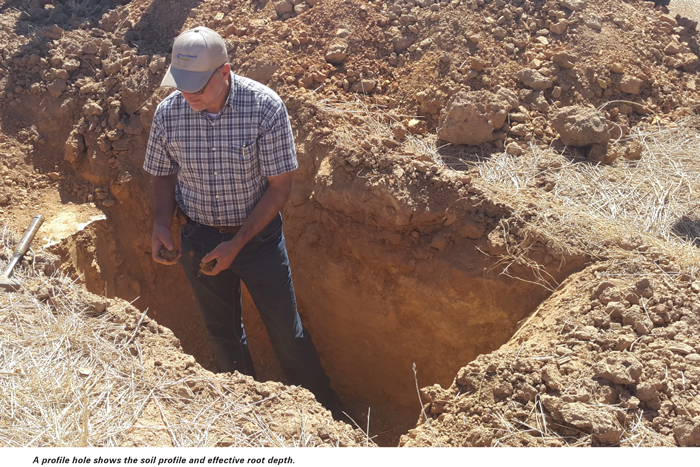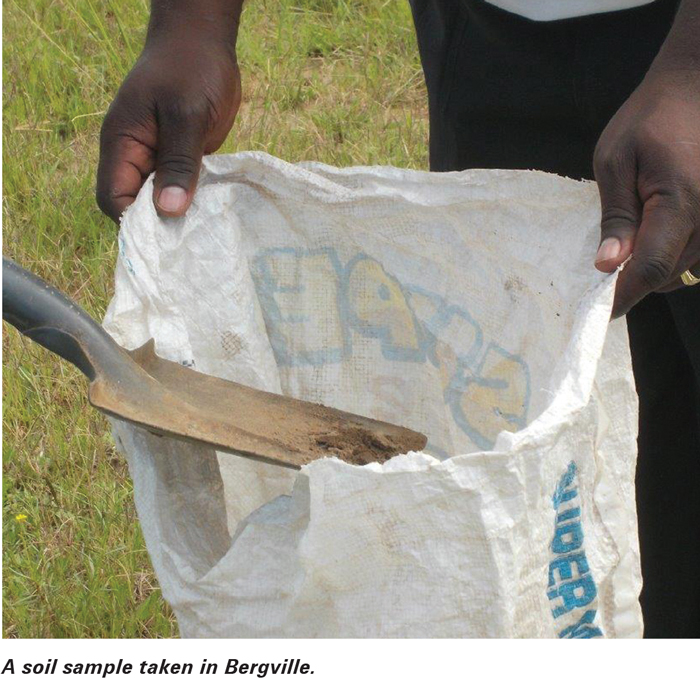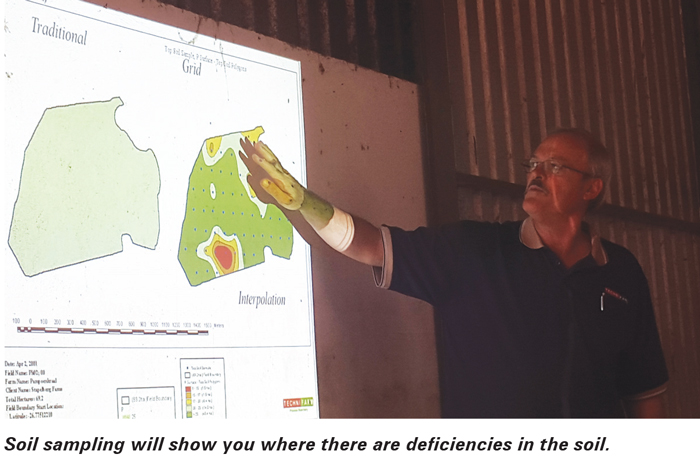May 2020
| Written by a retired farmer |  |
Soil sampling, correctly done, is a critical step in managing your soil fertility for each cash crop in a crop rotation system or for the pastures used to produce livestock products.
It is important to keep records of all samples taken and the soil test results that you receive from various soil samples sent directly to test laboratories or consultants in the fertiliser industry. The recommendations for optimum fertiliser use given for a crop or soil will determine your ultimate crop yield and the current and long-term success of your cash cropping operation.

The crop yields actually realised can be compared to the soil test, knowledge of the levels and ratios of the existing soil fertility components and the quantity of the fertiliser elements of nitrogen (N), phosphates (P), potassium (K), calcium, magnesium, zinc, boron and other trace elements applied.
The soil test becomes the benchmark for encouraging the farmer to increase the fertility and yields of the cash crops being grown over many years.
RECOMMENDATIONS AND CONSIDERATIONS
It is important to take soil samples 2 to 4 weeks before the summer production season to allow for testing and the interpretation of results before you order the correct fertiliser. The soil starts to warm up after winter and so August to September is an ideal time period. If you can get in early you will receive the results from the laboratory before the seasonal rush to test thousands of samples.
The ARC-Small Grain Institute situated in Bethlehem for example, has given good service and reliable results over many years. The general guidelines for sampling are to take samples during the same phase of a cultivation programme, to go through a land in a zig-zag pattern with the sampling tool with bag attached and to take samples at random, equally between and within the previous crop rows.
Take samples for top-soil analysis from a depth of 0 mm to 200 mm in the main crop rooting zone and the subsoil from 200 mm to 600 mm. If you are doing soil analysis on an unknown land it is advisable to take both so that an accurate record of fertility improvement can be kept. If you buy or hire a new farm, ask the previous owner if he can give you the previous records of soil sampling to make a comparison to the current tests.
Homogeneous or lands of a similar soil type and depth smaller than 50 ha’s must be sampled and marked separately. 20 to 40 samples must be taken over the entire area of each homogeneous unit of the land. The 20 to 40 samples must be mixed thoroughly, and a final sample of 0,5 kg to 1,0 kg placed in a sealed bag and sent or delivered to the laboratory.
It is highly recommended that the correct sample boxes supplied by the different laboratories be taken to site and the mixing and labelling of each sample be diligently done at each land to avoid any possibility of confusion of which sample mix belongs to which land.
ADDITIONAL KNOWLEDGE REQUIRED
When taking soil samples it is important to know and see the actual soil profiles, the descriptive name designated to that soil, the effective root depth together with your rainfall data to have an accurate estimate of the yield potential of a certain block of soil types or individual lands within a farming enterprise. The fertility of each and the fertiliser to be applied must be ‘calibrated’ to the soil test benchmarks created and the actual yields realised over many production seasons.
Some essential resources to read and to have at hand when looking at soil test results are Soil Classification – A taxonomic system for South Africa (ISBN 0-621-10784-0) and the latest edition of the Fertilizer Handbook (ISBN 0-909071-86-1). The fertilizer handbook has been found to be very accurate when calibrating the soil test, fertiliser recommendations for various levels of crop yields and the yields realised in practice on your farm.
To one’s surprise some farmers with over 20 years of crop experience have never dug soil profile holes and so do not know the true potential of the soils. It is essential to obtain the maximum yields from the highest potential soils. Each must have a specific fertility programme that is tailormade for optimum yields. Soils which are uneconomic for cash crops should be put back to planted pastures.
CONCLUSION
Take soil samples of your most high potential lands first if resources and time is limited and complete a careful and accurate survey and analysis of your fertility levels in each of the other lands over the next few years. It is the key to successful cash crop farming.
Publication: May 2020